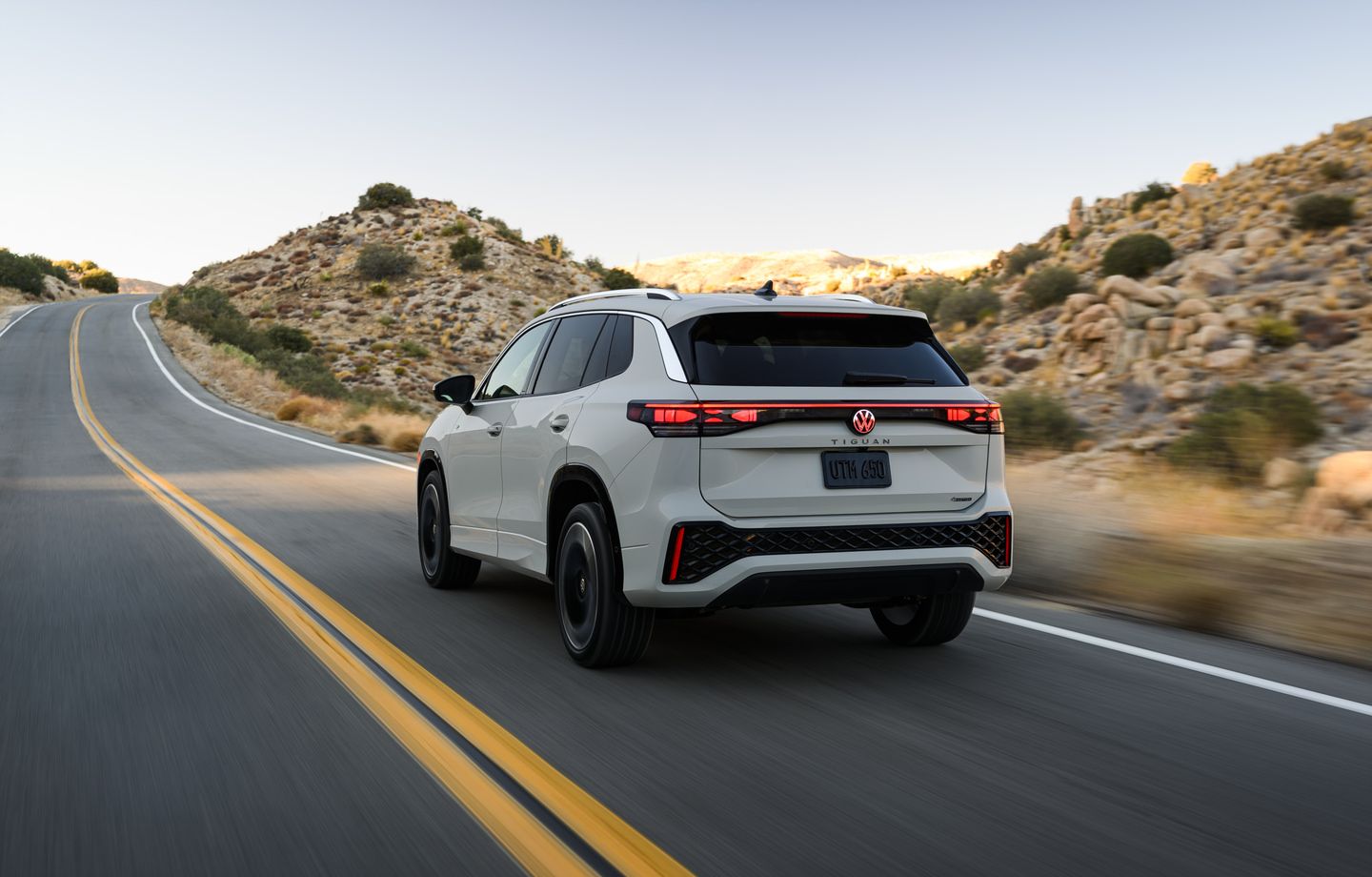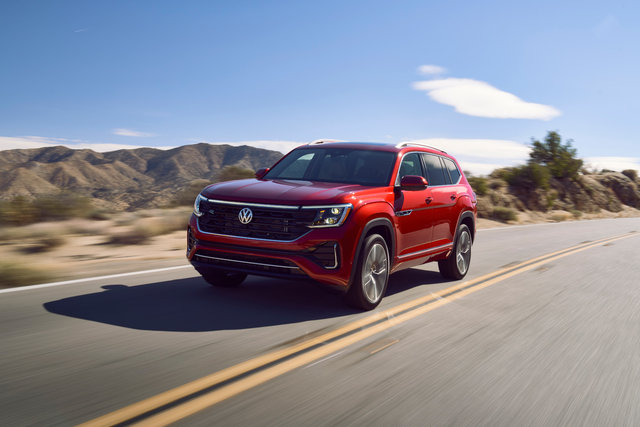Driving through Ontario means dealing with everything from Highway 11's cottage traffic to Highway 400's unpredictable flow. Your vehicle needs to do more than just get you from point A to point B—it needs to work with you to reduce stress and improve safety. That's exactly what Volkswagen's IQ.DRIVE suite delivers. This collection of driver assistance technologies helps you stay focused, comfortable, and confident on every journey.
IQ.DRIVE is a complete system that uses front and rear radar, a front camera, and multiple ultrasound sensors to create a network of safety and convenience features. From your daily commute to weekend trips up to Muskoka, IQ.DRIVE adapts to the road ahead.
What Is IQ.DRIVE and How Does It Work?
IQ.DRIVE is Volkswagen's suite of advanced driver assistance systems. It brings together several technologies that monitor your surroundings, assist with steering and braking, and alert you to potential hazards. The system relies on sensors placed around the vehicle to constantly scan the road ahead, behind, and beside you.
The goal is simple: make driving safer and less tiring. IQ.DRIVE steps in during the moments that matter most—heavy traffic, long highway stretches, tight parking situations, and sudden stops. It doesn't replace your attention, but it supports your decisions and helps you respond faster.
Travel Assist: Semi-Automated Driving Support
Travel Assist is the centrepiece of IQ.DRIVE. This feature provides semi-automated driving assistance by helping to steer, accelerate, and brake your vehicle in response to traffic conditions. It works by combining Adaptive Cruise Control and Lane Assist to centre your vehicle within lane markings while maintaining a set speed and distance from the car ahead.
During those long stretches on Highway 400 between Barrie and Toronto, Travel Assist reduces the physical effort of constant steering adjustments. You remain in control—your hands stay on the wheel—but the system takes over the small corrections needed to keep you centred in your lane. It's particularly helpful during stop-and-go traffic, where it can bring the vehicle to a complete stop and resume driving as traffic moves.
Key Benefits:
- Reduces driver fatigue on long highway drives
- Maintains lane position and safe following distance
- Handles stop-and-go traffic smoothly
- Requires hands-on steering for safety
Adaptive Cruise Control with Stop and Go
Adaptive Cruise Control (ACC) takes traditional cruise control to the next level. Instead of maintaining a fixed speed, ACC uses forward-facing radar to adjust your speed based on the vehicle ahead. You set your preferred cruising speed and following distance, and the system does the rest.
If the car in front of you slows down, ACC automatically reduces your speed to maintain the safe distance you selected. If traffic clears, the system accelerates back to your set speed. The Stop and Go feature means ACC can bring your vehicle to a complete stop if needed—and if the vehicle ahead moves within three seconds, ACC resumes automatically.
This feature shines during commutes through unpredictable traffic conditions. Highway 11 during cottage season or Highway 400 during rush hour becomes less stressful when ACC handles the constant speed changes for you.
Key Benefits:
- Maintains a set speed and safe following distance
- Automatically adjusts speed based on traffic ahead
- Can stop and resume in heavy traffic
- Reduces foot fatigue on long drives
Lane Assist: Stay Centred and Safe
Lane Assist uses cameras to recognize lane markings on the road. If your vehicle begins to drift out of its lane without a turn signal activated, Lane Assist provides gentle steering input to help guide you back. You remain in full control and can override the system at any time with minimal steering force.
On those long drives from Orillia to Barrie or through Muskoka's winding roads, Lane Assist acts as an extra layer of awareness. It's especially useful during moments of distraction—checking mirrors, adjusting climate controls, or dealing with passengers. Lane Assist doesn't prevent lane changes when you signal, so normal driving remains smooth and natural.
Key Benefits:
- Monitors lane markings continuously
- Provides gentle steering corrections
- Prevents unintentional lane drift
- Works with your driving, not against it
Side Assist: Blind Spot Monitoring with Rear Traffic Alert
Side Assist uses radar sensors at the rear of your vehicle to monitor the blind spots on either side. If another vehicle is detected in the adjacent lane or approaching quickly from behind, a visual warning appears in your side mirror. The system is designed to help you make safer lane changes, particularly during highway driving.
Rear Traffic Alert works alongside Side Assist by monitoring cross-traffic when you're reversing. If a vehicle is approaching from the side—common in busy parking lots or cottage driveways—the system provides both visual and audible warnings. This 180-degree view behind your vehicle reduces the risk of collisions when visibility is limited.
For weekend trips to cottage country, these features prove their worth in crowded parking areas and during highway merges where traffic moves fast. Side Assist doesn't replace shoulder checks, but it provides critical information that helps you make better decisions.
Key Benefits:
- Monitors blind spots on both sides of the vehicle
- Alerts you to vehicles approaching from behind
- Provides cross-traffic warnings when reversing
- Improves safety during lane changes and parking
Front Assist: Forward Collision Warning and Automatic Emergency Braking

Front Assist is your first line of defence against frontal collisions. The system monitors the road ahead for vehicles and pedestrians. If it detects a potential collision, it warns you with visual and audible alerts. If you don't respond quickly enough, Front Assist can apply automatic emergency braking to reduce impact severity or avoid the collision entirely.
Pedestrian Monitoring adds another layer of protection. The system can detect pedestrians travelling parallel to your vehicle and alert you to their presence. This feature is particularly valuable in urban areas, school zones, and busy intersections where pedestrians may appear suddenly.
Front Assist operates in the background, constantly scanning ahead. In those split-second situations where reaction time matters most—a car braking suddenly ahead or a pedestrian stepping into the street—Front Assist can make the difference.
Key Benefits:
- Warns of potential frontal collisions
- Monitors for both vehicles and pedestrians
- Provides automatic emergency braking if needed
- Works continuously in the background
Emergency Assist: A Safety Net for Medical Emergencies
Emergency Assist is designed for rare but serious situations where the driver becomes incapacitated. The system constantly monitors your attentiveness by checking for steering wheel input. If no input is detected, Emergency Assist triggers a series of escalating warnings: visual alerts, audible signals, and brake jolts.
If you still don't respond, Emergency Assist takes over. It gradually slows your vehicle to a stop in its own lane while activating hazard lights. This feature only works when Lane Assist or Travel Assist is active, ensuring the system has the necessary data to intervene safely.
Emergency Assist is the kind of feature you hope never to use, but it provides peace of mind knowing that help is built in if something goes wrong.
Key Benefits:
- Monitors driver attentiveness continuously
- Provides escalating warnings if no input is detected
- Brings the vehicle to a safe stop if necessary
- Activates hazard lights to alert other drivers
Key Takeaways
|
Feature
|
What It Does
|
|
Travel Assist
|
Semi-automated steering, braking, and acceleration in traffic
|
|
Adaptive Cruise Control
|
Maintains set speed and safe following distance; handles stop-and-go traffic
|
|
Lane Assist
|
Keeps vehicle centred within lane markings; prevents unintentional drift
|
|
Side Assist
|
Monitors blind spots and alerts to approaching vehicles; includes Rear Traffic Alert for reversing
|
|
Front Assist
|
Warns of frontal collisions with vehicles and pedestrians; provides automatic emergency braking
|
|
Emergency Assist
|
Brings vehicle to safe stop if driver becomes incapacitated
|
Experience IQ.DRIVE at Orillia Volkswagen
IQ.DRIVE turns everyday drives into more confident, less stressful experiences. From Highway 11 commutes to Muskoka weekend getaways, these technologies adapt to the roads you travel most. The system doesn't replace your attention or judgment—it enhances them.
Ready to see how IQ.DRIVE works in real driving conditions? Visit our team here in Orillia to explore Volkswagen models equipped with this technology and discover how it fits your daily routine.









